HCMC Indoor Climbing Championship 2024
Push Climbing is proud to announce the “2024 Ho Chi Minh City Indoor Climbing Championship” – the first competition licensed by the Ho Chi Minh City Department of Sports and Culture. This event marks a significant milestone in the establishment of the Vietnam Sport Climbing Federation. Athletes will compete in two categories: Bouldering and Lead Climbing, following the IFSC competition rules. Final scores will be the combined result of both categories. Join us in making history and representing Vietnam on the global stage!
*Athletes aged 18+ are eligible to register for participation.
Event Date: November 23, 2024
Payment and transfer details:
– To secure your spot, please deposit 300,000 VND (the ticket price is 550,000 VND).
– The remaining balance will be due upon ticket collection.
– Please note that all payments are non-refundable. However, if you need to transfer your spot to someone else, simply provide their full details to the organizers before the registration deadline (November 10, 2024).
We look forward to seeing you at the competition!
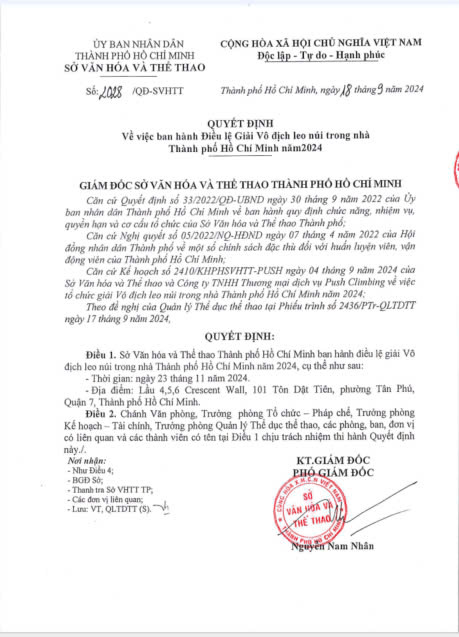
Live Stream Finals
WINNERS
FEMALE CATEGORY

Male CATEGORY

Qualification Results
FEMALES SCORING
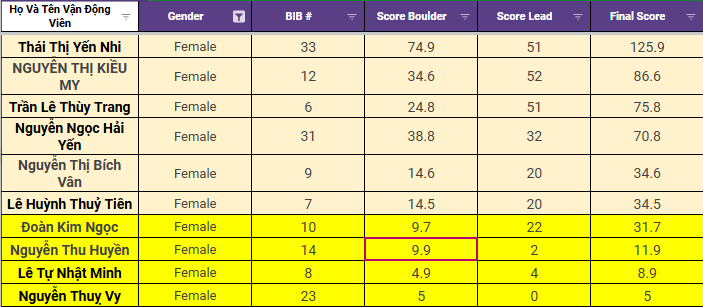
MALES SCORING
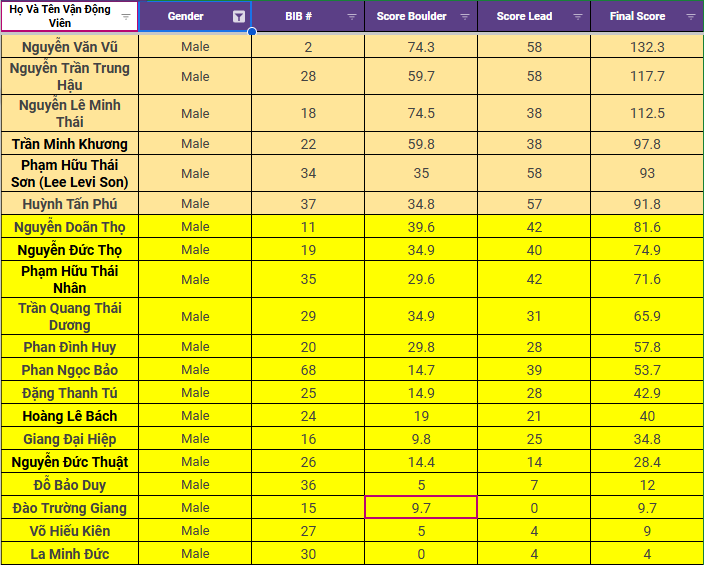
SCORING & RULES
The scores from the Bouldering and Lead Climbing sections are combined to determine the total score for each athlete.
Qualification round: 3 boulder problems, 2 Lead Routes.
Final round: 3 boulder problems, 1 Lead Route.
Athletes are ranked based on their total score.
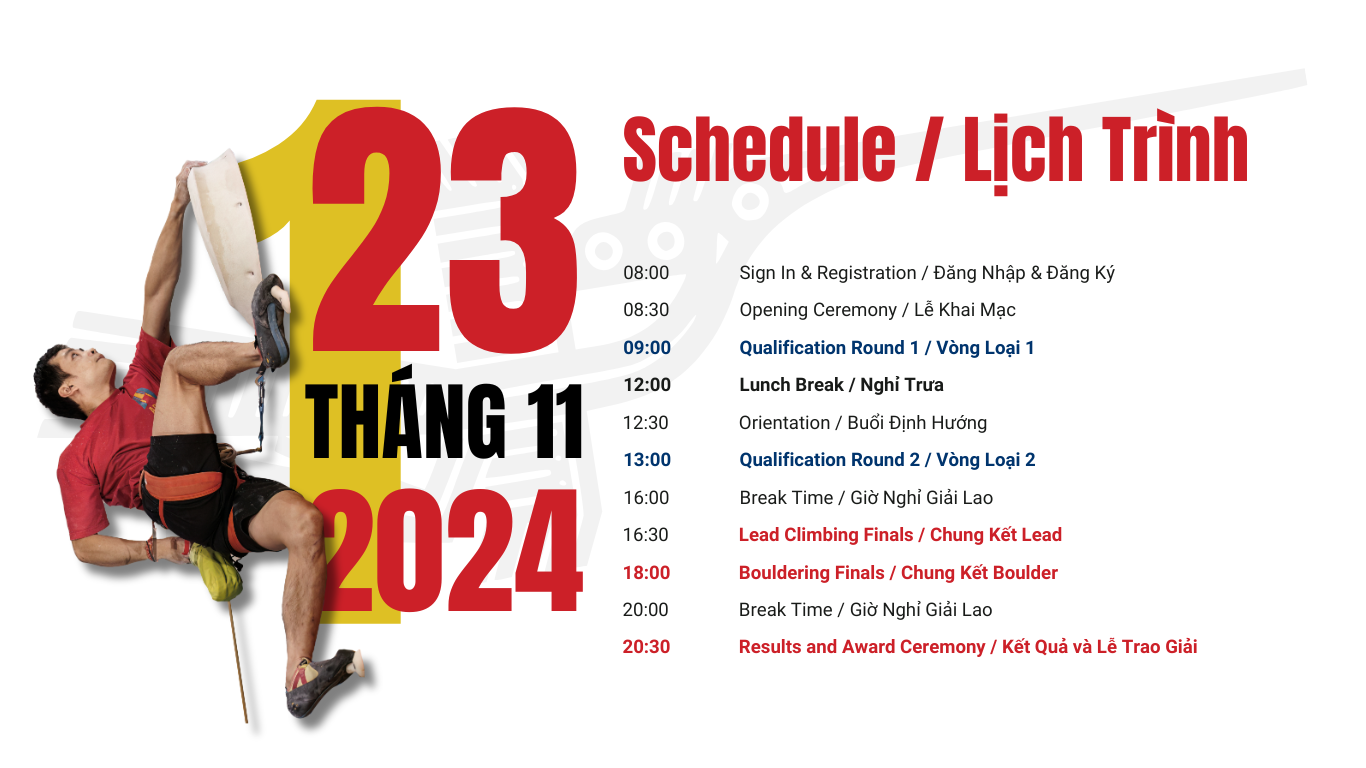
SPONSORS
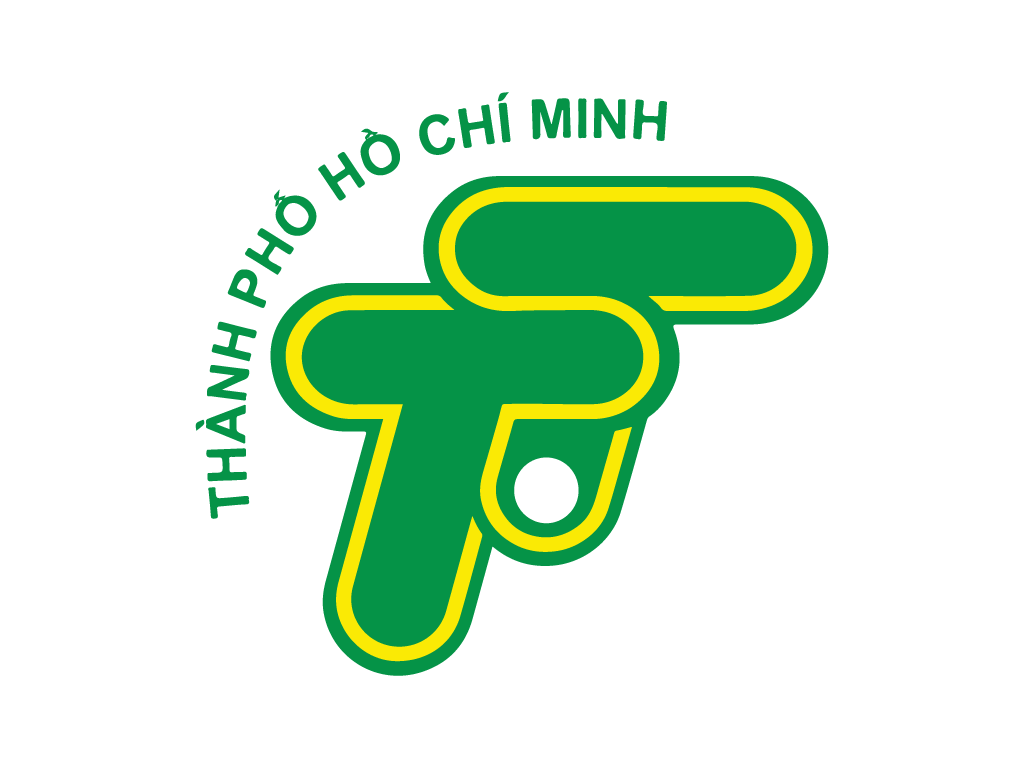
HCMC Department of Sports and Culture
The Ho Chi Minh City Department of Culture and Sports is here to support and enhance the city’s vibrant cultural, sports, and family activities. Working closely with the People’s Committee and the Ministry of Culture, Sports, and Tourism, the Department oversees a range of programs, services, and events that bring our community together.

Namah Ropes
Namah Ropes is a leading & trusted manufacturer of Ropes, Harnesses, Webbings & Slings. What sets us apart is our professional approach and dedication to providing Certified and Safe products. We aim to provide customers with high-quality and reliable products, ensuring strict quality control measures at every stage of the production process.

Amazfit
At Amazfit, we believe in the power of human potential and that limits are self-imposed. Our goal is to help you up your game in life and sports while prioritizing your well-being. Whether you’re striving for peak fitness, excelling as a professional athlete, or simply embracing life’s journey, Amazfit is a community united by the pursuit of reaching our greatest potential.

13G and C’mon Climb
C’mon was established with a focus on unique sports, new journeys, and explorations in life. It creates products that embody a distinct style and character for each sport.
13G Production is a professional company specializing in film production and photography, based in District 1, Ho Chi Minh City. With a mission to create high-quality and creative visual content, 13G Production works on diverse projects ranging from commercial advertising and corporate events to digital media campaigns.

MadRock
Mad Rock began in 2002 as a small, climber owned and operated company that made innovative, highly technical and affordable rock climbing shoes. After many years and over a million pairs later, we still choose not to reflect on our accomplishments nor rest on our laurels-because our best shoes will always be the next batch! To us, “Innovation” isn’t just a catch phrase-it’s a challenge to be met daily.

Wellosophy
Whatever your wellness goal, Wellosophy has the lifestyle advice, nutritional products and support to help you build new healthy habits for life. And now your go-to brand for holistic wellbeing and beauty expands to help you reach your skincare goals. Look and feel amazing today and secure a healthier, happier tomorrow.

Pocari Sweat
As one of Japan’s leading pharmaceutical companies, Otsuka used its expertise in human physiology as a jumping-off point to create Pocari Sweat. Inspired by the replenishing properties of IV solutions used in hospitals to restore the body, we set out to replicate that in a delicious drink that would be accessible to everyone.

Saigon Uniform
With 9 years of experience, Saigon Uniform has proudly served over 3,000 businesses nationwide, specializing in high-quality, affordable uniforms that elevate brand image and professionalism. We prioritize quality above all, with a deep commitment to integrity and customer satisfaction. Every team member at Saigon Uniform works with dedication, honesty, and a strong sense of responsibility to deliver exceptional products that make a lasting impression.

Union Trading
Founded in 2017, Union Trading has grown to manage a 150-hectare Cavendish banana farm in Binh Phuoc and a network of partner farms across Vietnam. Driven by a passion for agriculture and a commitment to high-tech farming, Union Trading delivers premium, high-quality produce to Vietnamese consumers and exports to demanding markets like South Korea, Japan, and the Middle East.







